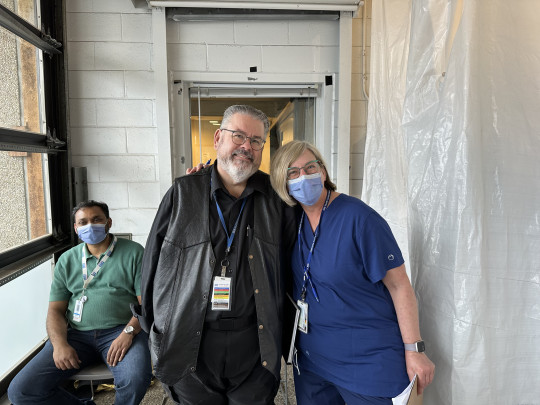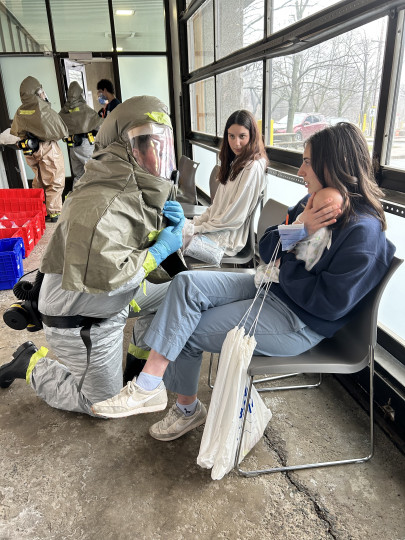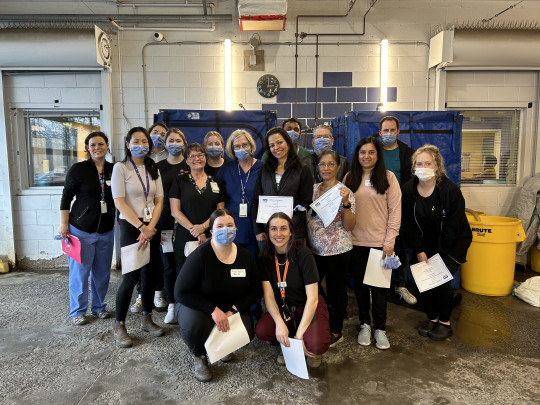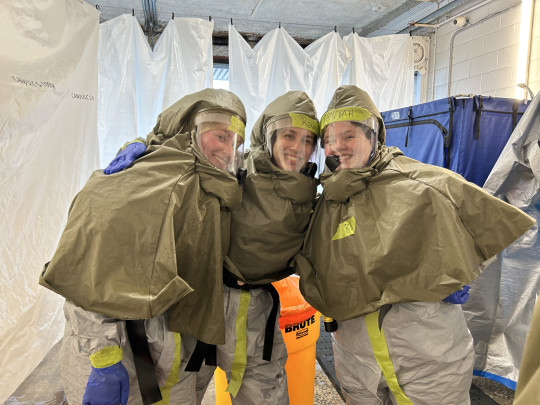At the heart of keeping patients, families and staff safe is emergency preparedness. The dedicated individuals who create these programs know that emergency training isn’t just about instilling knowledge but muscle memory in the face of chaos.
Recently, 20 dedicated Emergency Department staff completed the decontamination training, facilitated by Phil Porter, emergency preparedness (EP) coordinator and Dr. Vered Gazit, physician at the IWK Emergency Department and Medical Director for IWK Health’s EP program. Through this, staff learn how to respond when patients come to us for care when it isn’t safe for them to enter the facility because they are physically contaminated with a dangerous substance.
“We take a full day every year we do this training,” says Porter who has been running and refining this training with Gazit for the past 8 years. “In the morning is classroom work and, in the afternoon, we run a simulation.”
During the simulation, student volunteers from neighbouring schools become “patients”. Each youth is given a specific role to play that’s designed to help challenge trainees on how they would handle the situation in real life. This year, some of the roles were impatient crowds wanting to get inside, parents with small children who didn’t want to be separated, a person who fell unconscious, and a mother who didn’t speak English.
“It’s always very exciting for these students,” says Gazit. “Not just because they get to leave class for this, but also because it is a very interesting experience for them.”
“The simulated patients make it more realistic and helps trainees truly understand what the emergency would be like. You can talk in the classroom as much as you want but without the simulation component it's not enough.”
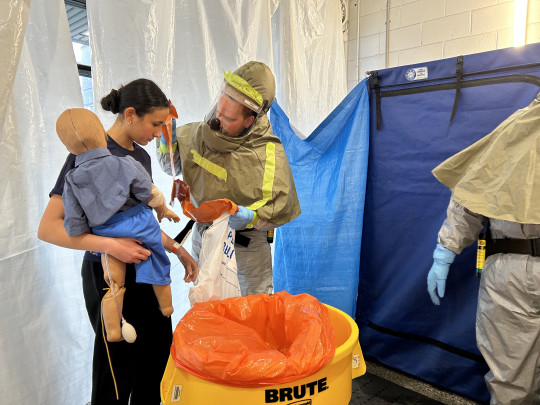
Close to 50 Emergency Department staff are trained to use the hazmat protection that’s needed when responding to a contamination emergency. The PPE is extensive including a protective impermeable one piece suit, a powered air filtration system, four pairs of gloves, precise donning and doffing procedures, and even a requirement to check the participant's vital signs before and after wearing the suit.
Uniquely, anyone in the Emergency Department can learn this training, no matter their work role. “We came up with the vision that you don't have to be a doctor or a nurse to help somebody clean themselves through this process,” explains Poter.
“We've trained people from Housekeeping, Maintenance and Protection Services. This allows us to keep most ED clinical providers inside the department where they'll receive the cleaned patients and can provide them care.”
All of this takes place in the ambulance bay on South Street. The space has been created from scratch to accommodate the decontamination process, with much of the equipment being procured from other areas of the heath centre and refurbished. Even still, this facility can decontaminate up to 20 people in under 40 minutes, exceeding the safety standard of 10 people per hour.
“It’s the staff and the ED who drive this work,” says Porter. “They think it's important. It's because we have such great staff that are engaged and willing to go the extra mile that we're able to do things like this.”
With each year’s training session, more revisions to the process are made as the organizers hear feedback about where the process can improve. A big thank you to everyone who contributed to pulling the training together and working hard behind the scenes. Special acknowledgment to Belinda Handspiker, Melanie Doyle, Liz Steele, Justin Steel, and Rebecca deChamplain.
